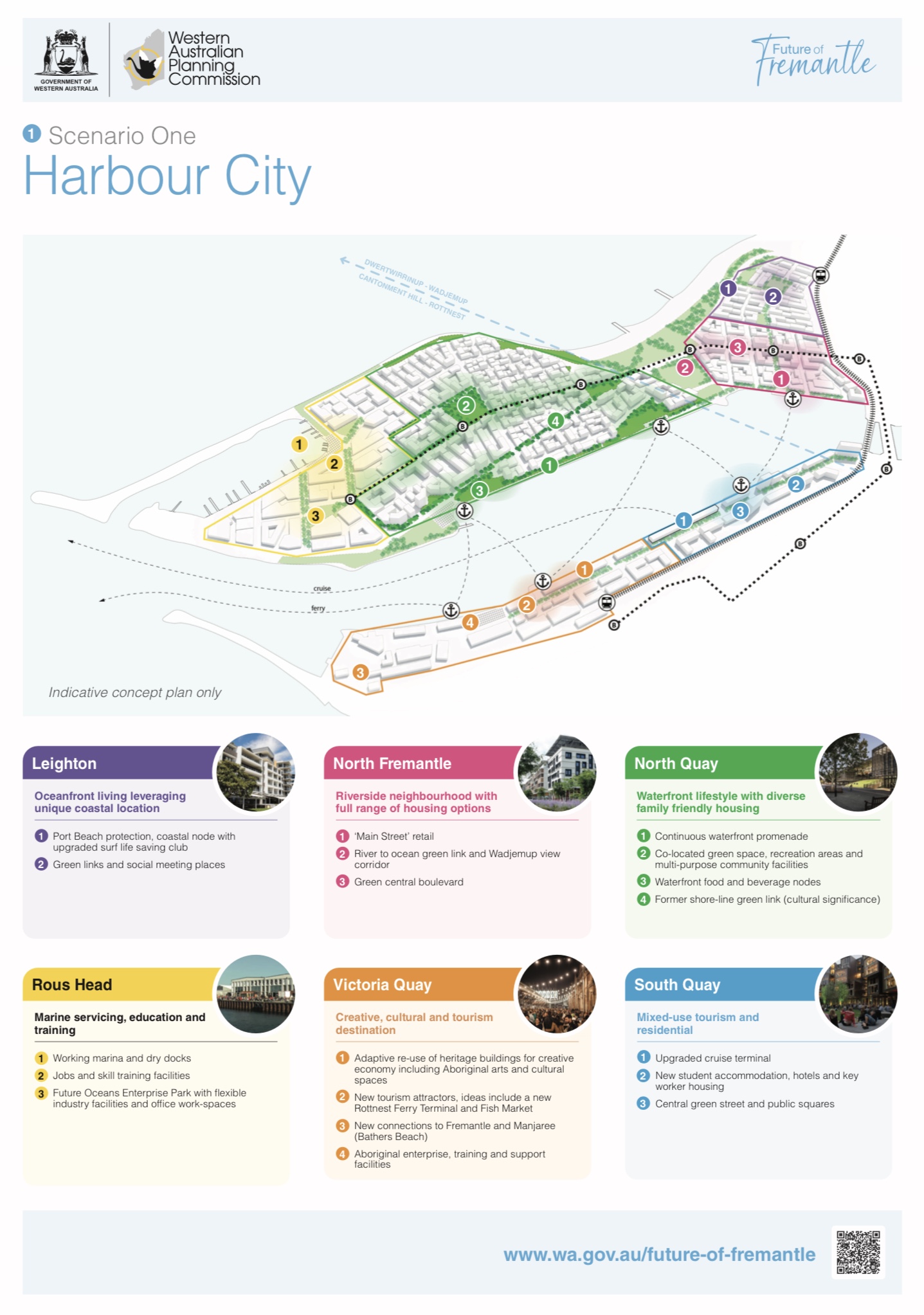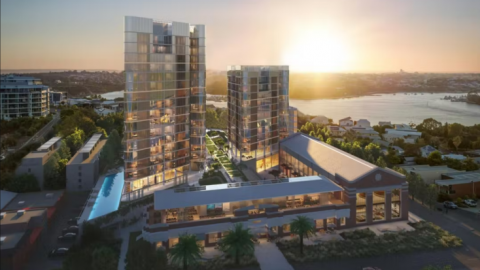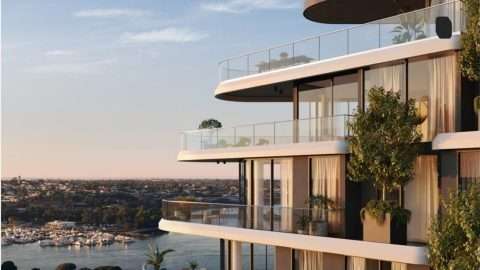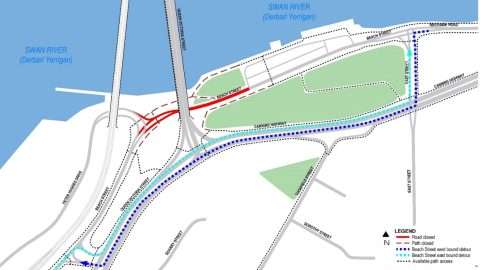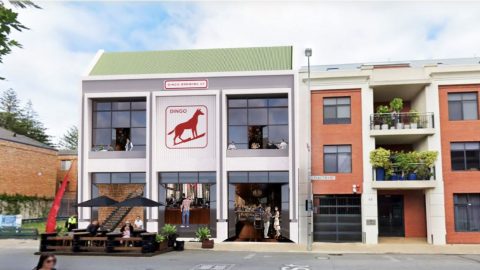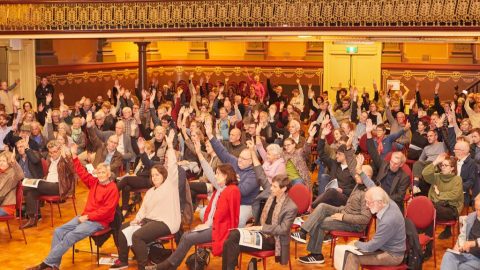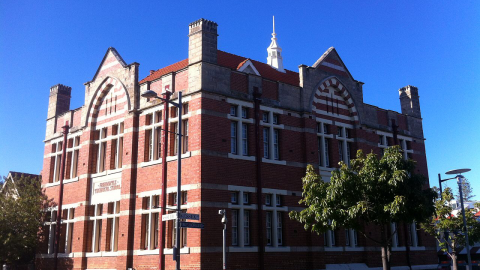5pm in the Old Customs House on a Wednesday night and we got a really good crowd.
Just about a full house, which is unusual for a voluntary activity on a topic most people only just heard about when the Herald did a front pager on the future of our city when the port shifts to Kwinana and we redevelop the container port.

After a brief overview from Jane Bennett, head of the Future of Fremantle Committee of the State Department of Planning and other things, we heard from Fremantle people. One after the other we heard views that were coherent and well considered. And apart from newly elected North Ward Councillor Ingrid van Dorssen,not a single Fremantle Councillor to be seen.
The good, and most powerful sense I had afterwards, was that we have a strong sense of place in our community that people love and do not want to lose. And we know that its possible to lose it if we get this Future Fremantle wrong.
Its big – 50,000 more people and 40,000 new jobs maybe. And if we leave it to developers alone they will build highly expensive, high-rise designed for rich people, or if we leave it to Main Roads we will get an 8 lane freeway through the site.
My two minutes was about Walkable Urbanism, which is where the urban area is designed to be compact density, not isolated high-rise towers like we see popping up in strange new places like Canning Bridge and Peppermint Grove.
This site from Victoria Quay to Leighton is a large site and if we built it all 5 to 8 storeys with multiple narrow streets then we would achieve the kind of densities suggested in Option 3 but with few cars and mostly people walking with good public transport links.
This would be highly economically attractive as this kind of urbanism is increasingly the place where people want to live and work and visit. But it will also be possible to make it integrated into the green spaces and foreshores and indigenous tracks that can make it a special local place.
This is the kind of vision that was built into both sides of the river in the 19th century up until the 1960’s. The famous West End of Freo has been the subject of huge focus to retain its remarkable form and we have largely been successful as we stopped a freeway through the middle and a road widening down the whole High Street designed to enable all old buildings to be demolished. But the West End lost most of its dense walkable urbanism in the 1960’s when 20,000 wharfies were laid off for the new Container Terminal, all the hotels collapsed and most of the nearby workers houses fell into ruin. It has slowly begun to revive this culture of walkable urbanism, especially with visitors who just like a free walk around on the weekends.
But many with an eye to history, like Ann Forma and Gerry MacGill, know that the same kind of dense walkable urbanism existed on the North Fremantle side of the river. Until the Container Port laid it to waste and left just a few houses on the other side of the highway. So, the cultural values that we feel in the fabric of Fremantle on both sides of the port, need to be held onto tightly as we face this Future Fremantle. That is the good bit.
The bad part of the evening for me was that we were told that not much is likely to happen for a decade but we will need to set aside space for the future infrastructure needs. The ugly bit will be if standard spatial planning rules are used to set out the site and provide ‘normal standards’ for the infrastructure as in all new suburbs on the urban fringe. The result will be wide streets that are designed for large service trucks to get through, rather than lots of small narrow streets essential for walkable urbanism. This needs spatial planning that copies regenerated old cities of the world that are now so attractive for their walkable urbanism. These are not our standard rules but they work for old places that need to be regenerated, like Fremantle.
And most of all we need to clearly grasp the impossibility of an 8 lane freeway through the middle onto a doubled Stirling Bridge. If we don’t grasp the walkable urbanism model we will be provided with an ultimatum in the form of a clear set of lines providing spaces that must not be developed. The whole Future Fremantle vision and values would be lost.
This cannot be allowed. Our big opportunity is to create a Future Fremantle on both sides of the river that is a globally significant, dense, walkable urbanism. That vision needs to be set in stone and as each step forward happens, including the land already coming up for development, the organic steps forward will be able to contribute to this vision and we can keep adding to it over the decades.
* By Peter Newman, Professor of Sustainability, Curtin University, long term Fremantle resident and Co-Convenor of Beeliar Group
** If you’d like to comment in the Vision, you can do so right here on the Department’s Consultation Hub. But you need to do so soon, as it’s only open until 15 January.
WHILE YOU’RE HERE –
PLEASE HELP US TO GROW FREMANTLE SHIPPING NEWS
FSN is a reader-supported, volunteer-assisted online magazine all about Fremantle. Thanks for helping to keep FSN keeping on!
** Don’t forget to SUBSCRIBE to receive your free copy of The Weekly Edition of the Shipping News each Friday!


